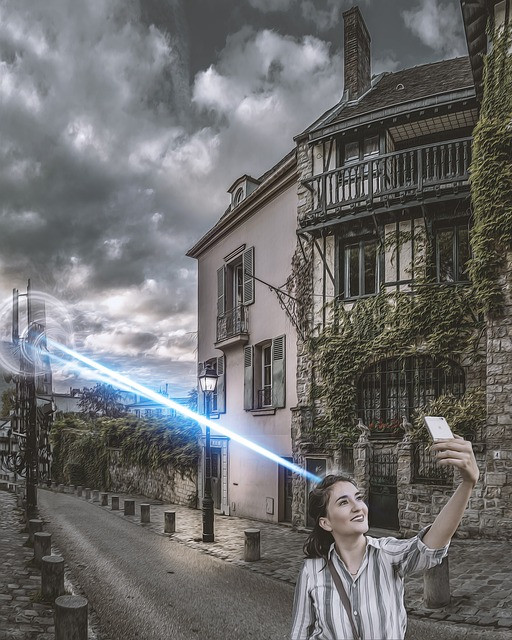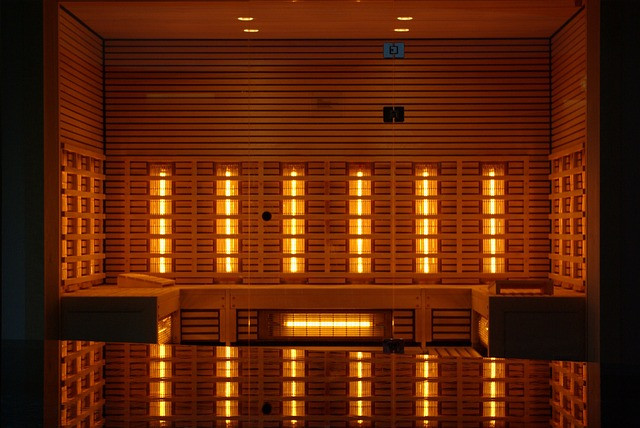Motion sensors detect movement. From automatic doors to security alarms. At their core, they’re designed to pick up changes in the immediate environment. Depending on the type, they might use infrared, ultrasonic waves, or even microwaves. When something moves, these waves get interrupted or reflect differently. The sensor catches this change and triggers a response, like turning on a light or sounding an alarm.
What are motion sensors?
Motion sensors are devices that detect movement within a designated area. They play a key role in security, automation, and several other applications. When they detect motion in restricted areas, they can perform various actions like sounding an alarm, turning on lights, or sending a notification to alert others.

The role of Motion Sensors in home security
A well-designed home security plan always includes motion sensors. By detecting unexpected movement, two sensors, can trigger alarms, switch on lights, or even an electronic device to send you a notification. They are vital to securing your home.
There are two widely used types of motion sensors: active ultrasonic and passive infrared (PIR)
There are two dominant technologies in motion detection: active ultrasonic and passive infrared (PIR). Active ultrasonic sensors emit sound waves, and when an object interrupts these waves, the sensor detects motion by the change in wave patterns. In contrast, passive infrared (PIR) sensors identify infrared radiation, often emitted by warm objects, like humans. Each has specific applications, advantages, and limitations, especially when applied in a security system and automation settings.

Microwave (MW)
Microwave (MW) motion sensors operate using microwave pulses and then measure the reflection of these waves off a moving object. These sensors have a broad coverage area and can penetrate non-metallic objects, making them suitable for situations where obstacles might hinder other sensors like fences and trees.
However, their sensitivity means they can sometimes register a false alarm or alarms from unintended sources, so careful device calibration and positioning are essential. Some examples:
Industrial Settings: In large warehouses or storage facilities, MW sensors can effectively monitor broad areas, ensuring security and detecting any unauthorized movement.
Automatic Doors: Ever walked up to a supermarket, and the doors slid open? MW sensors are often behind this, detecting your approach even if you’re pushing a cart or have other objects in front of you.
Elevator Lobbies: MW sensors can detect when a person is approaching, ensuring the doors remain open until the person has safely entered or exited.
Outdoor Perimeters: While MW sensors can sometimes pick up false alarms from moving foliage when calibrated correctly, they’re invaluable for large outdoor areas, like compounds or parking lots, where the sensor might need to “see” through non-metallic barriers like fences or bushes.
Smart Lighting Systems: In office buildings or commercial spaces, MW sensors can detect occupancy and adjust lighting levels accordingly, even if the occupants are stationary for extended periods.

Dual technology motion sensors
Dual technology motion sensors combine two primary detection methods: passive infrared (PIR) and microwave (MW). The integration of these microwave motion sensor technologies aims to enhance accuracy and minimize false alarms.
PIR sensors detect heat signatures, like that of a human body, to detect objects, while MW sensors measure the reflection of emitted microwave pulses off moving objects. In a dual-tech camera setup, for an alarm to be triggered or an action to be taken, both the PIR and MW sensors need to simultaneously detect motion.
This dual confirmation reduces the likelihood of false detections from sources like moving curtains or small animals, ensuring a more robust and reliable, motion detector detection system.
High-Security Areas: Places like banks, research labs, or data centers often use dual-tech sensors to minimize false alarms while ensuring no movement goes unnoticed.
Commercial Buildings: In spaces where HVAC systems might cause things like blinds to move (which can trigger a single-tech sensor), dual-tech sensors help differentiate between non-threatening movements and actual security breaches.
Residential Settings: Homeowners who want a more reliable security system might opt for dual-tech sensors, especially in areas prone to false alarms like basements with pests or near windows.
Garages & Workshops: These spaces might have machinery or tools that can cause minor movements or temperature fluctuations. Dual-tech sensors can filter out these false triggers.
Retail Stores: To prevent false alarms from things like moving merchandise or AC drafts, dual technology can offer a more precise motion detection solution, ensuring only significant movements (like after-hours intruders) are flagged.

Motion sensors have a limited range. Work with a professional to determine where best to install them to maximize your security coverage
Think of your motion detectors and sensors like flashlights. They can only “light up” and detect movement in a certain area. So, if you put one unit in the wrong spot, you might miss some suspicious activity happening just out of their “view.” This is why talking with an expert can help.

Passive infrared motion sensors
Passive infrared sensors, often called PIR sensors, are like little heat detectors. Instead of seeing with light, they “see” by picking up on heat radiated by objects, especially living things like humans and animals. When something warm moves in front of the sensor (like a person walking by), the sensor notices the change in heat and can react, like turning on a light or sounding an alarm.
How to install a motion sensor
Here’s a bullet-point guide on installing a motion sensor:
Safety First:
Turn off the electricity to the area you’ll be working in.
Choose the Right Spot:
Select a location free from common distractions.
Aim for a height of 6-10 feet off the ground.
Mount the Base:
Hold the sensor’s base against the wall in your chosen spot.
Secure it using the screws provided.
Attach the Sensor:
Once the base is fixed, attach the main sensor unit.
Connect Wires:
If it’s a wired model, connect the sensor wires to your electrical circuit.
Typically, match wire colors (e.g., black with black, white with white).
Battery Check:
If battery-operated, insert fresh batteries ensuring correct orientation.
Test the Sensor:
Turn the power back on.
Walk in its detection zone to ensure it’s working.
Adjust sensitivity or angle as needed.
Consult the Manual:
Always refer to the manufacturer’s guidelines for specific instructions and troubleshooting.
There are a handful of less commonly used motion sensor technologies
Tomo-sensing machines contain several nodes. Nodes join together and form an interconnection. Sensors detect the presence of persons when the connections between the nodes are broken.
Vibration motion sensors detect humans and objects using infrared energy and tiny vibrations triggered by movements such as small vibrations such as footsteps. Microwave sensors transmit a pulse of electromagnetic energy from the atom. Similar to an active ultrasound sensor the electromagnetic radiation from microwave waves reflects back on objects and is sent out into the sensor.
The sensors actually cover more areas in comparison to PIR sensors. Certain motion sensors are called “dual-technology”, as they combine two different sensors into one system.

Best practices for mounting sensors
Ensuring the optimal positioning and setup of sensors can make a big difference in their efficiency. Here’s a detailed guide on best practices for mounting and installing your motion detectors and sensors:
Consider the Sensor’s Field of View:
Just like how a camera’s angle determines what it captures, a sensor’s position will dictate its detection area. Ensure it’s angled to cover as much of the intended area as possible.
Height Matters:
Motion sensors are typically best positioned 6-10 feet off the ground. This height allows the sensor to cover a broad area while avoiding most ground-level distractions.
Avoid Obstructions:
Ensure there are no furniture pieces, plants, or other obstructions blocking the sensor. This can create blind spots or impede its efficiency.
Minimize False Triggers:
Keep sensors away from heat sources like radiators, vents, or appliances. Sudden changes in temperature can cause false alerts, especially with passive infrared sensors.
For outdoor sensors, consider elements like swaying trees or bushes. Their movement can be detected and lead to unnecessary alerts.
Weather Considerations (for outdoor sensors):
Place sensors under eaves or other protective structures to shield them from rain, snow, or direct sunlight.
Ensure they are weatherproof or have the necessary protective casings.
Accessibility for Maintenance:
Place sensors where they can be easily accessed for battery replacements, cleaning, or other maintenance tasks.
Stay Away from Metal:
For sensors that use radio frequency or other wireless technologies, keep them away from large metal objects or structures. Metal can interfere with their signal transmission.
Test Regularly:
After mounting, test the sensor to ensure it covers the desired area and isn’t overly sensitive.
Regularly check to ensure they’re functioning correctly, especially after any alterations to the room or area.
Seek Expert Advice:
If uncertain about a location, it might be worthwhile to get feedback from a security professional or the sensor’s manufacturer.
Conclusion
Motion sensors are devices designed to detect movement within a specified area, serving vital roles in security, automation, and more. They come in various types, from Passive Infrared (PIR) that detects heat changes, to Microwave (MW) that uses reflected microwave pulses, to dual technology that combines methods for increased accuracy. Proper installation and understanding of each type’s specifics ensure ideal performance. Whether used for home security or more advanced applications, motion sensors play a crucial role in modern technology, enhancing safety and convenience.
Frequently Asked Questions
What can trigger a motion sensor?
Typically motion detectors employ passive IR for motion detection. In other words, these devices are able to detect the movement of the infrared light source in motion. All infrared light and varying temperatures can cause the motion sensors to operate.
Are motion sensors like cameras?
Yes, motion sensors aren’t cameras, but are used occasionally by camera systems. A motion sensor is anything used to detect motion. It can be accomplished either by capturing infrared heat signatures or bouncing microwaves into space and measuring distances.
How do motion sensors work in the dark?
When someone moves in the detection field of an IR sensor, it senses the infrared light and responds accordingly. Because infrared is an invisible light source that is detectable regardless of how much light it is in the atmosphere, the sensor will perform well in the dark.
What are the best motion sensors?
Most popular movement sensor brands. Mode Protocols: Miyao – Qara motion sensing. ZIGBEEE. Aeotec Multisensor. 6 Zwaves. ikea pdf wireless motion sensing Zigbee. Philips Hue Motion Sensor Zigbee. 1 second row.
What are the three types of motion detectors?
A basic motion detector will detect objects up to 70 ft in diameter. There are other detection tools that can detect more. The types are optical, ion, and radio wave detectors that can be helpful in different situations.